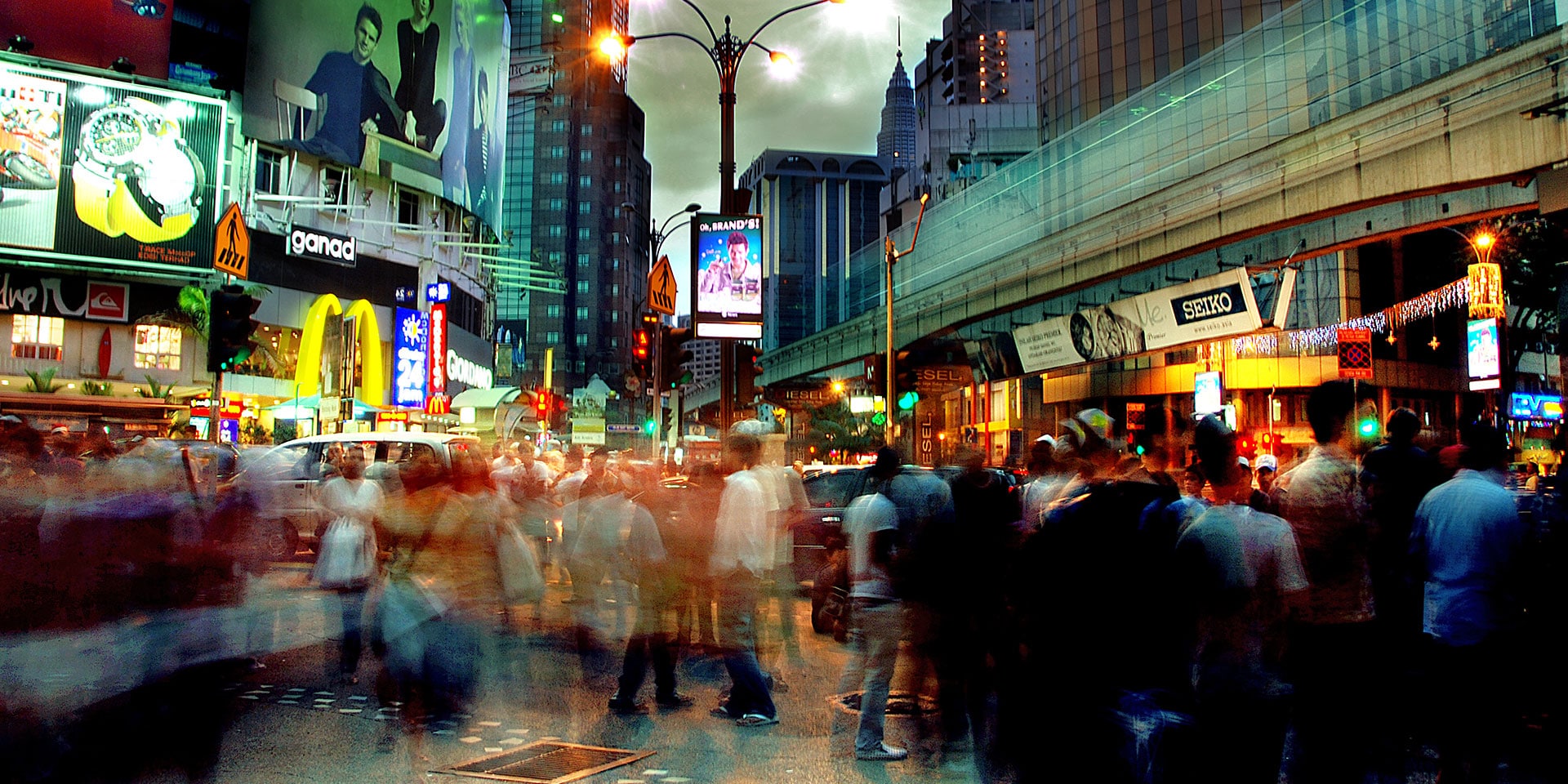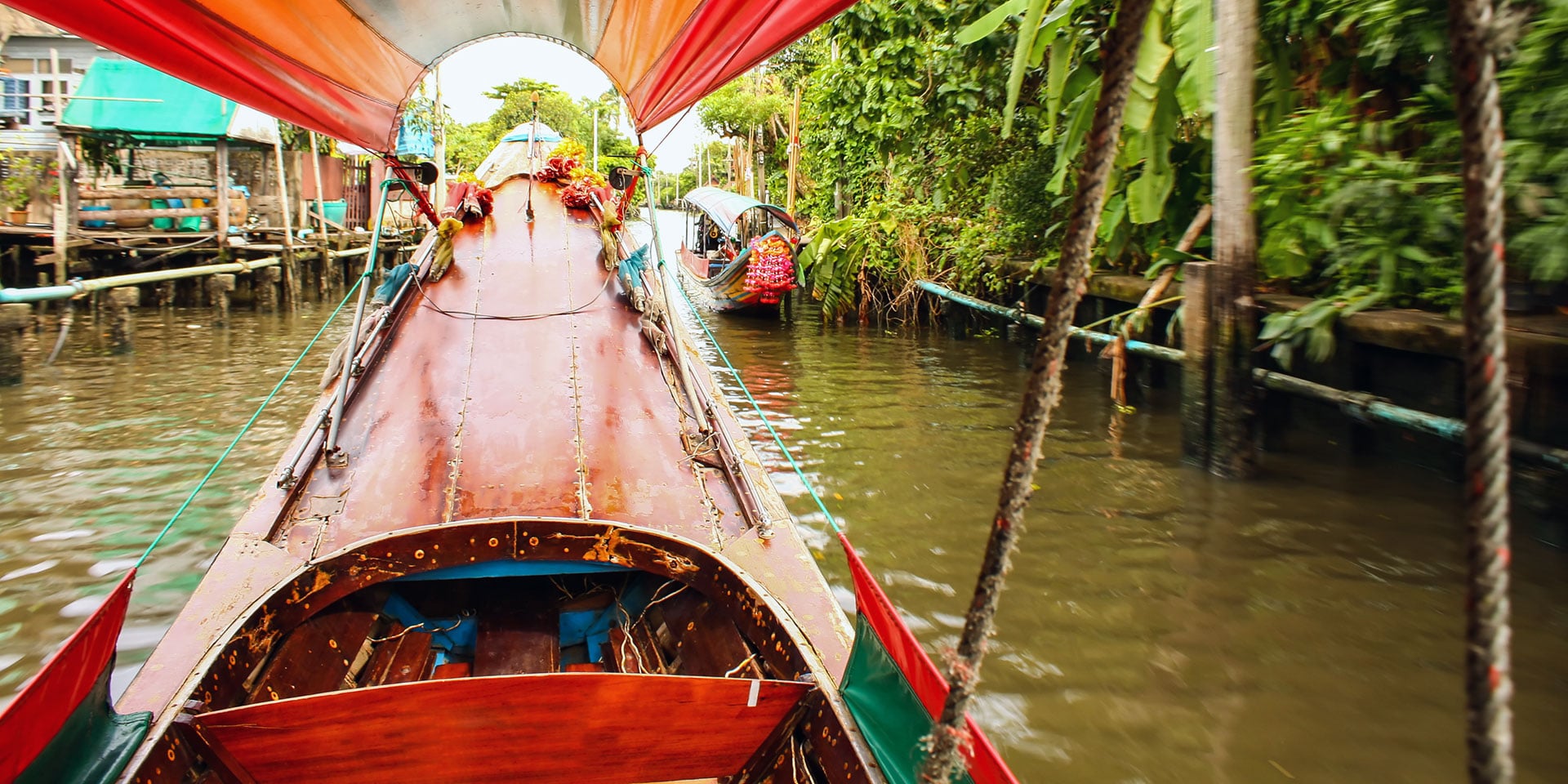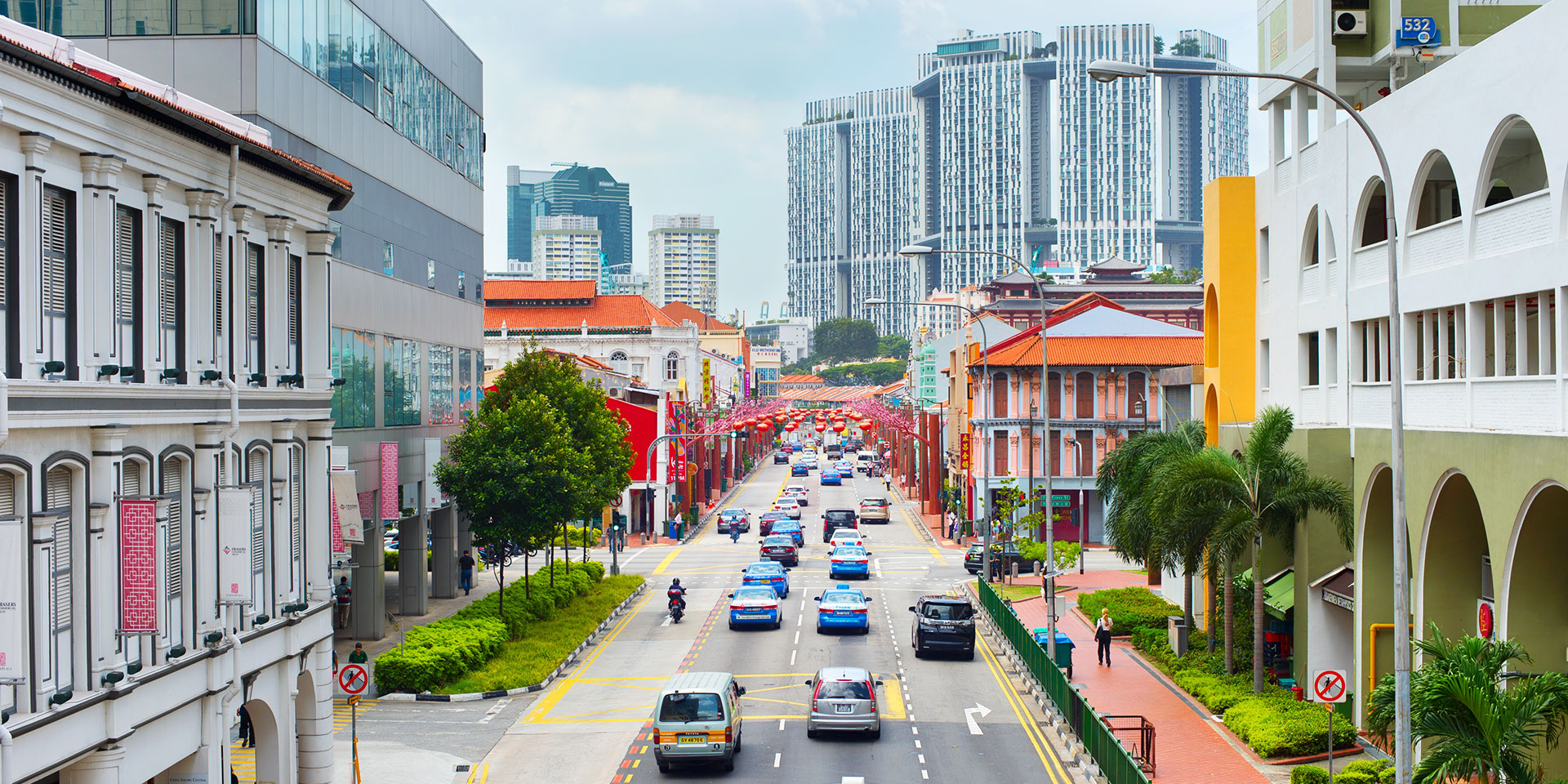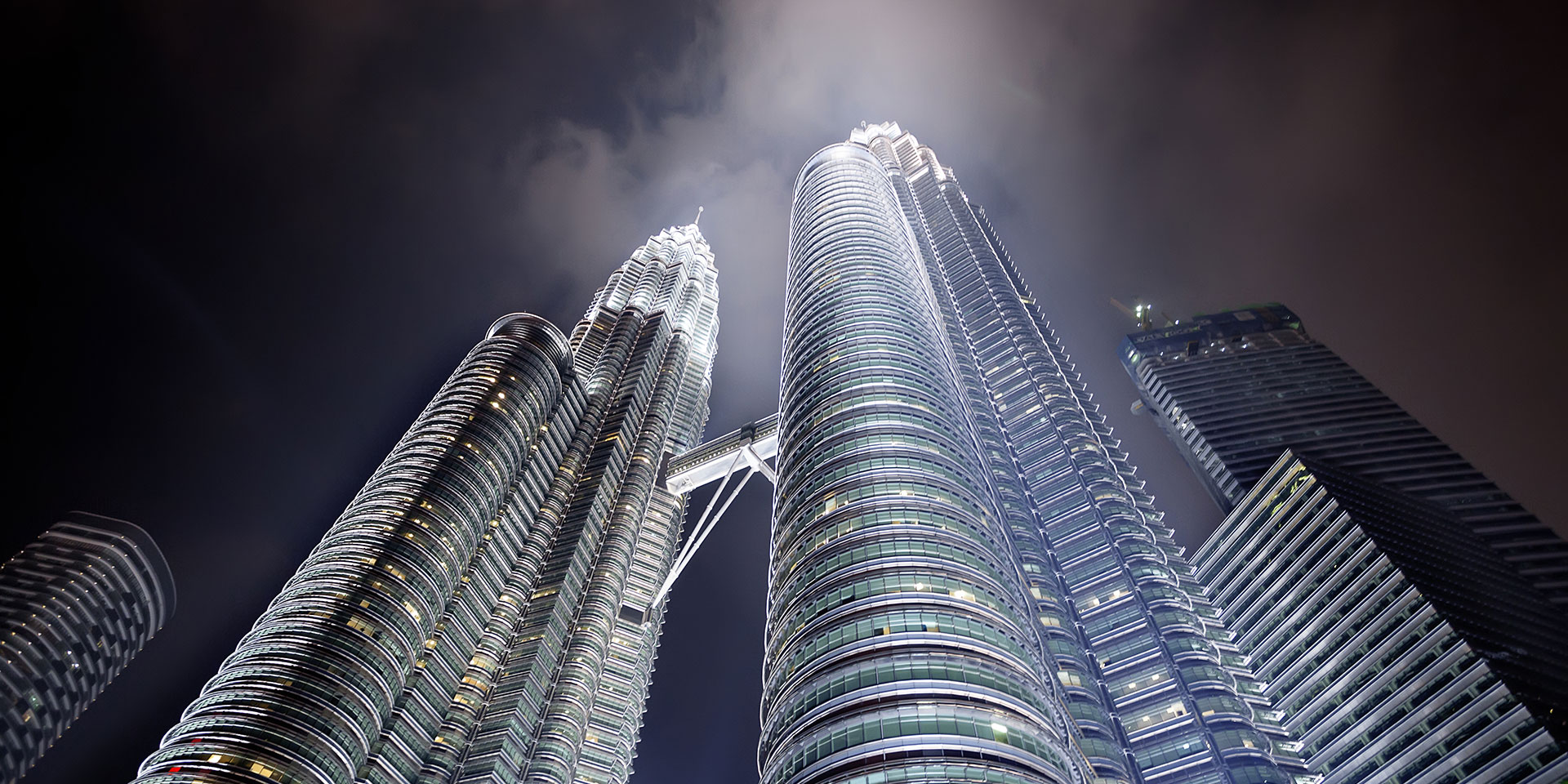
Put your photo skills to the test in Kuala Lumpur. (Photo: Getty Images)
Tips + TrendsBeyond Exteriors: How to Photograph a City’s Soul
By Mark EveleighEvery city has its own unique character. Whether you’re shooting with a pro-level SLR or the simplest point-and-shoot cellphone, the most impressive cityscapes you capture will be the ones that say something about the cities you visit. If you take time to hunt down an original angle and adapt to circumstances, you’ll consistently get the best images possible under a variety of conditions.
As an assignment photographer, I’m often sent by magazines to capture the soul of a city through my camera lens. There are usually unavoidable obstacles to overcome: smoky Sumatran skies meant that the only colorful shots of Palembang were captured after dark; a commission to photograph shop houses during a particularly drizzly Singapore rainy season led to a strategy of shooting close-up architectural details rather than wide-angle skylines. In many cases the results were surprising.
1. Cities that never sleep: Kuala Lumpur
Tip: Be there and be ready
Many cities are at their most vibrant at night. Carry a tripod if you want to capture the play of neon and moonlight, but try to plan your shooting strategy in advance. Take some test shots so that you’ll be ready to capture the exact one you’ve envisaged in your mind’s eye when the lighting is just perfect (and there’s still a hint of sunlight in the sky).
2. Put the viewer in the picture: Bangkok’s Chao Phraya River
Tip: Include foreground context

Find a vantage point that puts the viewer in context and don’t be afraid to include foreground to create something original out of what might just have been a boring city shot. By setting a relatively long depth of field (on your SLR it will show as a high F-number) I’m able to keep everything in focus.
3. River of neon: Palembang, Sumatra
Tip: Adapt to the Situation
A slow speed setting captures an image that could never be seen by the naked eye. A smoggy, smoke-filled sky once threatened the success of an assignment so it was crucial that I take advantage of the color that nightfall brought with it. A 5-second exposure was needed (at ISO400) to ensure recording not only the changing lights and light trails.
4. Urban sky: Singapore
Tip: Look for unexpected compostions

Even in the most developed business centers, the most fascinating images are often wonderful contrasts between the old and the new.
When the sky is insipidly white, by zooming in I’m able to frame an image so that a high-rise building behind older shop houses (dating back to 1903) appears as a patterned backdrop.
The apartment block almost looks like some weird urban sky. (This effect could have been accentuated by soft-focusing the new building but a minimum of F5.6 was needed to keep the all-important shop houses in focus).
5. Urban jungle: Taipei
Tip: Work to find the best angle
Taipei 101 (1,671 feet) was the first building in the world to break the half-kilometer mark. As such, it’s visible from almost anywhere in the Taiwanese capital. Nevertheless, to get an original shot the photographer might have to ‘go the extra mile’ (in this case literally).
From the slopes of Elephant Hill it’s possible to photograph the Taipei skyline framed in jungle foliage—thus transporting the viewer to the tropics in a way that a purely urban image could never do.
6. Up on the roofs: Bukit Tinggi, Indonesia
Tip: Understand your equipment
Shooting with a long lens (and maximum depth of field) accentuates a jumble of roofs to create a very busy image that portrays modern city life in a way that wide-open spaces rarely will.
If it’s true that a picture can say a thousand words then the unique melange of architectural styles in certain regions (Chinese, Islamic, Dutch colonial, Minangkabau) speaks volumes about the fascinatingly convoluted history of Bukit Tinggi.
7. Converging Parallels: Kuala Lumpur
Tip: Keep moving

Cityscapes and buildings aren’t mobile so that’s all the more reason for you, as a photographer, to be active in chasing the unusual angle. Play with distorted—almost vertigo-inducing—angles that non-photographers would rarely even notice.
Switch lenses and shooting angles tirelessly and, from time to time, you’re sure to come up with an original angle even of a city that is exhaustively photographed.







